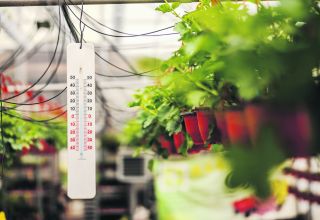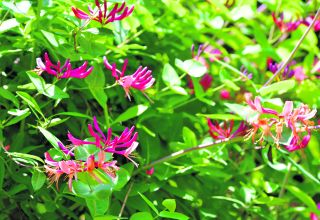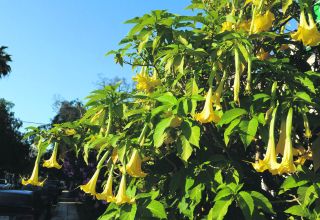
Growing sweet peas (Lathyrus odoratus) in autumn offers gardeners lots of good news that can lead to stronger plants, earlier blooms, and a more rewarding gardening experience overall.
While traditionally thought of as a springtime flower, autumn sowing of sweet peas is a time-tested technique, popular among experienced gardeners and in mild winters.
One of the most significant benefits of sowing sweet peas in autumn is the extended period allowed for root development. While top growth slows down during winter, roots continue to grow underground, especially in temperate climates. This head start helps the plants establish a solid root system before spring, leading to stronger, more vigorous growth once temperatures begin to rise.
These well-established roots help the plant cope better with early spring weather fluctuations and allow it to draw up nutrients and water more efficiently, supporting larger, healthier blooms later in the season.
Sweet peas grown in autumn often flower several weeks earlier than their spring-sown counterparts. This means gardeners can enjoy beautiful blooms from late spring onwards, rather than waiting until early summer. Early flowering is particularly desirable for those who want to make the most of their garden’s blooming season or who grow sweet peas for cutting or exhibition purposes.
Earlier blooms also avoid the hottest part of the summer, which sweet peas typically dislike. Sweet peas tend to struggle or stop flowering during prolonged heatwaves, so autumn sowing allows you to enjoy their peak beauty before the harshest summer temperatures arrive.
Autumn-sown sweet peas are generally hardier and more robust than those sown in spring. Exposure to cool temperatures early in their development encourages the plants to grow stockier and tougher, better able to withstand pests, wind, and other stresses.
When grown under cold frames, in unheated greenhouses, or even directly in the ground in milder climates, sweet peas experience a natural ‘hardening off’ process.
Another often-overlooked benefit of autumn sowing is garden scheduling. By starting sweet peas in autumn, you free up valuable greenhouse or propagator space in early spring for other crops like tomatoes, chillies, or cucumbers. This helps streamline your gardening workflow and ensures you’re not juggling too many seed trays at once during the hectic spring rush.
Autumn sowing aligns well with the sweet pea’s natural lifecycle. In their native habitats, many sweet peas are naturally cool-season growers, germinating with autumn rains and flowering as temperatures rise in spring. By mimicking this pattern, gardeners can tap into the plant’s evolutionary strengths, leading to healthier and more productive plants.
Sweet peas are beloved for their fragrance and are popular cut flowers.
Autumn-sown plants, due to their earlier and more prolonged flowering period, produce more blooms over the season. This means more bunches for the vase and potentially a longer window for harvesting stems if you’re selling flowers or simply love having them indoors.
Autumn-sown sweet peas can also have an advantage when it comes to avoiding pests. For example, aphid populations tend to be lower during the cooler months, giving young plants a chance to establish without the early stress of insect attack.
Autumn growing of sweet peas is a smart strategy. By taking advantage of the cooler months for root development and plant hardening, gardeners can enjoy stronger plants, earlier blooms, and a more efficient gardening schedule.
Why sow autumn sweets peas
- Better root development
- Earlier flowering
- Tougher plants
- Less competition in the garden
- Natural growth cycle
- Ideal for cut flowers
- Pest and disease avoidance











